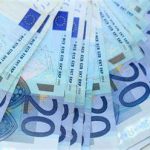The Search for the Best Counterfeit Money Provider: A Deep Dive into Risks and Solutions
In the middle of the intricacies of modern-day economies, the subject of counterfeit money remains a pressing problem. The effect of counterfeit currency is substantial, causing losses for organizations and eroding public rely on financial systems. This short article aims to explore the nuances surrounding counterfeit money, the techniques employed by counterfeiters, and the capacity (albeit prohibited) "providers" in this shadowy market. Furthermore, it goes over the steps to fight counterfeiting and understand the wider social and legal implications.
Understanding Counterfeit Money
Counterfeit money refers to imitation currency produced with the intent to trick and fraudulently utilize it as real money. Counterfeiting has a long history and has progressed substantially with advancements in technology. Over the last few years, the increase of digital platforms and advanced printing techniques has made it simpler for counterfeiters to produce premium replicas of genuine currency.
The Dangers of Counterfeit Currency
Economic Impact: Counterfeit currency weakens the economy by increasing inflation and decreasing the value of real currency.
Loss of Trust: It wears down customer confidence in the financial system, causing greater examination of financial transactions and practices.
Legal Consequences: Being included with counterfeit money, whether purposefully or unconsciously, can lead to severe legal charges, consisting of jail time and heavy fines.
Increased Costs for Businesses: Businesses deal with extra costs related to determining counterfeit notes, consisting of training workers and executing more advanced verification systems.
Common Characteristics of Counterfeit Bills
To understand the nature of counterfeit money, it is vital to understand the typical traits that can help identify them:
Irregular Quality: Counterfeit costs typically have inferior printing quality, like fuzzy edges or blurred printing.
Poor Paper Quality: Legitimate currency is usually printed on special paper that has a distinct texture and feel.
Missing Out On Watermarks: Genuine bills feature watermarks that are challenging to duplicate.
Incorrect Security Features: Items like security threads, microprinting, and holograms may be missing or inadequately replicated on counterfeit costs.
Color Discrepancies: Counterfeit costs might display colors that are not real to the real currency due to inadequate printing methods.
The Illegality of Counterfeit Providers
Though different sources may exist that offer counterfeit currency, it is paramount to highlight that these sources run outside the law. Engaging with Falschgeld bestellen providers is criminal and includes serious implications. Police work relentlessly to punish counterfeit operations, employing innovative innovations and investigative techniques to locate counterfeiters.
Bottom Line to Consider:
Legality: Counterfeiting is unlawful in all types and can cause extreme criminal charges.
Ethical Implications: Contributing to counterfeit activities not just jeopardizes one's own future but also harms society as a whole.
Scams Prevention: Investing in legitimate business practices yields far much better security and returns compared to involvement in the counterfeit economy.
Measures to Prevent Counterfeiting
Federal governments and banks take various actions to fight counterfeiting. These are some techniques that can help decrease the occurrence of counterfeit currency:
Improved Security Features: Nations continually update their currency with advanced security functions, making counterfeiting significantly challenging.
Public Education Campaigns: Governments launch awareness projects to educate the public about how to determine counterfeit costs.
Training for Businesses: Financial organizations provide training for organizations to recognize counterfeit currency and execute steps for detection.
Usage of Technology: Cutting-edge technologies like ultraviolet scanners and digital currency systems help in early detection of counterfeit costs.
Law Enforcement Collaboration: Agencies work carefully with banks to track and apprehend counterfeiters.
The Future of Currency and Counterfeiting
As society relocations toward a more digital landscape, the approaches of counterfeiting are most likely to evolve. Cryptocurrencies, digital wallets, and electronic payments have started to alter the monetary landscape significantly. Some professionals predict that counterfeit physical currency might lessen as customers adopt these digital options more widely. However, this shift presents its own threats and problems, as cybercrime and digital forgery become progressively widespread.
FAQs About Counterfeit Money
Q1: What should I do if I get a counterfeit expense?
If you presume that you have received a counterfeit expense, do not attempt to pass it. Rather, report it to the regional police. They will direct you on the next actions and might collect the counterfeit costs as evidence.

Q2: Are all counterfeit costs simple to find?
Not always. Some counterfeit bills can be challenging to recognize, particularly if they are of high quality and make use of advanced printing methods. It's vital to understand the security functions of the currency you manage.
Q3: Can I be punished if I unwittingly accept counterfeit currency?
Normally, knowing involvement in counterfeiting brings more severe charges. Nevertheless, accepting counterfeit currency unknowingly could result in loss of money and time as you try to resolve the concern through law enforcement.
Q4: How can companies secure themselves against counterfeit costs?
Organizations must purchase training staff members to identify counterfeit bills, use verification equipment, and stay informed about the latest security features in legitimate currency.
Q5: Is counterfeiting just an issue in cash deals?
While cash deals are the most noticeable aspect of counterfeiting, digital platforms can face their own kinds of forgery, mainly through scams, hacking, and deceitful digital currencies.
Conclusion
The world of counterfeit money is loaded with risks and ethical problems. While the idea of obtaining counterfeit currency might appear enticing, it ultimately brings substantial legal and monetary repercussions. Understanding the intricacies of counterfeiting-- together with using reliable avoidance approaches-- will act as the most sensible technique to securing personal properties and societal trust in monetary systems.
